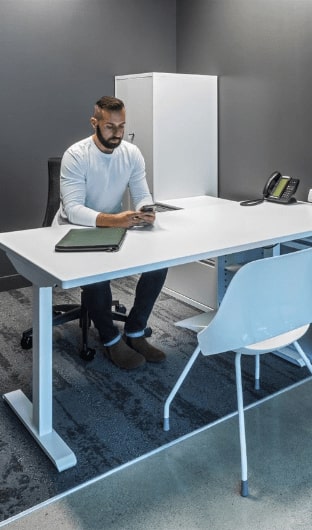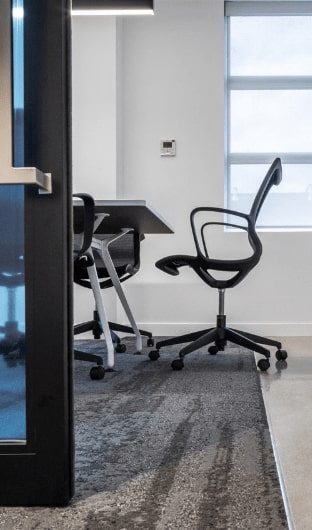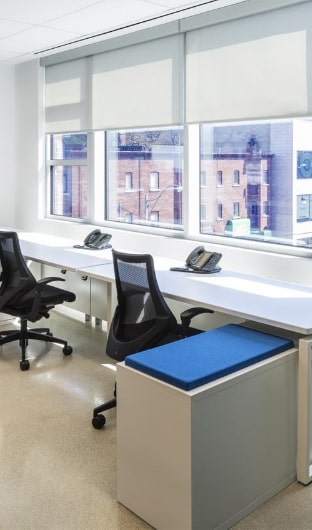Creating Educational Facilities Designed For Student Wellness
When it comes to educational settings, the selection of suitable furniture plays a pivotal role in creating conducive learning environments. The careful curation of education furniture can significantly impact students’ comfort, focus, and overall academic performance. From ergonomic chairs to versatile desks, each piece contributes to shaping a space that fosters productivity and engagement. Understanding the importance of ergonomic design and durability is essential when choosing furniture for classrooms, libraries, or study areas. This article delves into the significance of education furniture in enhancing learning experiences and provides insights into selecting the most appropriate pieces for various educational settings.
The Role of Wellness In Educational Design
Physical Comfort
Furniture design plays a crucial role in ensuring students’ physical comfort within educational spaces. Ergonomic chairs and desks can help prevent posture-related issues, promoting better focus and engagement. Well-designed furniture also supports movement, allowing students to shift positions comfortably during long periods of study.
Mental Well-being
Incorporating elements of nature in furniture design, such as natural wood finishes or biophilic patterns, can positively impact students’ mental well-being. These design choices create a calming environment that reduces stress levels and enhances overall mood. Soft seating options and adjustable lighting further contribute to creating a soothing atmosphere conducive to learning.
Academic Performance
Research has shown that wellness-focused design in educational settings can lead to improved academic performance. By prioritizing student well-being through comfortable and aesthetically pleasing furniture, schools can create an environment that fosters concentration and creativity. Enhanced mental health resulting from wellness-oriented design can positively influence students’ cognitive abilities and academic outcomes.
Understanding Physiological Wellness Needs
Ergonomic Principles
Teachers should prioritize ergonomic principles when selecting education furniture. Consider factors like adjustable desk heights and supportive seating to promote better posture and overall physical well-being. Ergonomically designed furniture can enhance comfort and reduce the risk of musculoskeletal issues.
Impact On Student Posture
Proper seating and desk height significantly influence student posture and health. Teachers must ensure that students’ chairs provide adequate lumbar support and are at the right height to maintain a neutral spine position. This can prevent back pain and discomfort, promoting better focus and learning outcomes in the classroom.
Flexible Furniture Arrangements
Flexible furniture arrangements play a crucial role in catering to diverse physical needs in educational settings. By allowing for easy adjustments and adaptations, teachers can create dynamic learning environments that accommodate various body types and preferences. This fosters inclusivity and ensures that all students have access to comfortable seating options.
Impact Of Emotional Wellness On Students
Supportive Environment
Creating a supportive environment in educational settings significantly contributes to students’ emotional resilience. When students feel supported by their surroundings, they are more likely to develop strong emotional skills that aid in coping with challenges. This, in turn, enhances their overall well-being and academic achievement.
Effects Of Colour, Lighting, And Layout
The choice of colour, lighting, and layout within classrooms plays a crucial role in influencing student mood and engagement. Warm colours like yellow and orange can evoke feelings of happiness and creativity, while cool tones like blue promote calmness. Adequate lighting levels are essential for maintaining focus and alertness among students. A well-thought-out layout that promotes movement and collaboration can enhance student interaction and participation.
Importance Of Safe Spaces
Establishing safe spaces for emotional expression within educational settings is paramount for fostering student well-being. These spaces provide students, including autistic individuals, with a secure environment where they can freely express their emotions without judgment. By encouraging open communication and emotional sharing, educators can create a supportive atmosphere that nurtures students’ emotional growth and development.
Fostering Intellectual Growth Through Design
Adaptable Furniture
Adaptable furniture encourages flexibility in classroom setups, catering to diverse learning needs. It promotes collaboration among students and fosters a sense of community.
Innovative high schools are increasingly opting for adaptable furniture to create dynamic learning environments. This approach benefits both kindergarten and neurodivergent students by providing them with comfortable and functional seating options.
Spatial Organization
Effective spatial organization in classrooms can significantly impact teaching methods and student engagement. Strategically arranging furniture, educators can create zones for group work, individual study, and interactive learning activities.
New school building projects often prioritize flexible spatial layouts to accommodate various teaching styles. This design supports well-rounded education pilot projects that aim to enhance student experiences through versatile classroom arrangements.
Technology Integration
Seamlessly integrating technology into furniture design is becoming a common practice in modern educational settings. Incorporating charging stations, interactive screens, and ergonomic designs into desks and chairs can enhance students’ learning experiences.
Schools specializing in innovative teaching methods understand the importance of technology integration in furniture. By embracing this trend, educators can create interactive learning spaces that cater to the digital needs of both students and teachers.
Integrating Wellness Principles
Classroom design should prioritize integrating wellness principles to foster a healthy environment for students. Incorporating elements like natural light, ergonomic furniture, and green spaces can significantly impact student well-being.
Creating physical school buildings that promote wellness involves considering factors such as air quality, temperature control, and acoustics. These elements play a crucial role in enhancing the overall learning experience for students.
Community Involvement
Engaging the community in the design phase of high school buildings is essential to ensure that the school reflects the needs of all stakeholders. This collaborative approach can lead to the development of spaces that cater to diverse learning styles and preferences.
Creating Healthy Learning Environments
Air Quality
Healthy classrooms prioritize air quality to ensure students’ well-being and focus. Proper ventilation systems and regular maintenance are crucial in maintaining optimal air quality. Clean air reduces the spread of illnesses and improves overall cognitive function.
Adequate ventilation in educational environments helps in preventing the buildup of pollutants, ensuring a fresh and healthy atmosphere for students and educators. Proper airflow also contributes to temperature regulation, creating comfortable learning spaces.
Cleanliness And Maintenance
Maintaining cleanliness in school environments is essential for preventing the spread of germs and infections. Regular cleaning schedules and proper waste management are key aspects of sustaining a healthy educational space. A clean environment fosters a sense of well-being and safety among students.
Conclusion
For those involved in education furniture and school design, prioritizing wellness is not just a trend but a fundamental aspect of creating environments that nurture students’ growth and development. By implementing the best practices outlined in this discussion, stakeholders can contribute significantly to the well-being and success of the next generation. It is imperative to continue exploring innovative ways to adapt learning spaces for ongoing wellness, ensuring that every student has access to environments that optimize their potential. Connect with Harkel Office – a leading education furniture dealer in Ontario to create a healthy and inspiring learning environment.





